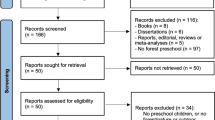Abstract
In terms of gaining environmental awareness and sensitivity, preschool is the most important period in an individual’s life. Preschool education enables lasting steps to be taken towards sustainable development, which has become widespread issue of increasing importance in recent years, and whose importance continues to increase. There is a need for studies that establish environmental awareness and support sustainable development throughout the world, especially in developing countries, such as Turkey. Taking this need into consideration, the purpose of this study is to introduce the results of the “Learning about soil with Tipitop and his friends” project, a project organized within the scope of the project group activities of the Scientific and Technological Research Council of Turkey (TUBITAK) Schools of Nature and Science (4004). The aim of the project was to introduce soil and concepts related to soil conservation to preschool children between 5 and 6 years of age. The sample group of the project was comprised of 180 children (90 experimental, 90 control) between the ages of 5 and 6, attending the kindergarten of primary schools, affiliated to the National Ministry of Education, located in the province of Denizli. Research findings demonstrated that the soil-related knowledge scores of children in the experimental group of the project increased in a statistically significant way, in comparison to those of children in the control group.
Similar content being viewed by others
References
Akçay, İ. (2006). Environmental education for preschool children in different countries. Unpublished master’s thesis, Uludağ University, Bursa, Turkey.
Alexander, A., & Russo, S. (2010). Let’s start in our own backyard: Children’s engagement with science through the natural environment. Teaching Science, 56(2), 47–54.
Bandura, A. (1977). Social learning theory (1st ed.). Englewood Cliffs, NJ: Prentice Hall.
Basile, C. G. (2000). Environmental education as a catalyst for transfer of learning in young children. The Journal of Environmental Education, 32, 21–27.
Davis, J. (2009). Revealing the research ‘hole’ of early childhood education for sustainability: A preliminary survey of the literature. Environmental Education Research, 15(2), 227–241.
Dewey, J. (1938). Experience and education (1st ed.). New York, USA: Collier Books, Macmillan.
Early Childhood Education and Sustainable Development. (2011). Early childhood education for sustainable development. ScienceDaily. Retrieved January 15, 2011, from http://www.sciencedaily.com/releases/2011/01/110111132525.html.
Finch, M., Freitas, P., Hall, K., & Roach, K. (2006). Design, implementation and assessment of a soil education camp for children at The Suan Phung Nature Education Park Ratchaburi Province, Thailand. Unpublishing project report. Project Number: SZT C066. Worcester Polytechnıc Institute, USA.
Fullen, M. A. (2003). Soil erosion and conservation in northern Europe. Progress in Physical Geography, 27(3), 331–358.
Grodzinska-Jurzcak, M., Stepska, A., Nieszporek, K., & Bryda, G. (2006). Perception of environmental problems among pre-school children in Poland. International Research in Geographical and Environmental Education, 15(1), 62–76.
Gülay, H., & Akman, B. (2009). Social skills in preschool period. Ankara, Turkey: PegemA Publishing.
Harlen, W., & Qualter, A. (2009). The teaching of science in primary schools (5th ed.). Abingdon, England: Routledge.
Hughes, M. (2007). Climbing the little green steps. Gosford and Wyong, Australia: Gosford and Wyong Council.
Kızıltaş, M. S., Hacıyakupoğlu, S., Gökbulak, F., & Hızal, A. (2009). Determination of soil loss by 137 Cs fallout radionuclide in Ömerli watershed of Istanbul, Turkey. Turkish Journal of Agricultural & Forestry, 33, 295–303.
Lee, C.-K. H., & Ma, W. H. T. (2006). Early childhood environmental education: A Hong Kong example. Applied Environmental Education and Communication, 5, 83–94.
Lewis, E., Mansfield, C., & Baudains, C. (2010). Going on a turtle egg hunt and other adventures: Education for sustainability in early childhood. Australasian Journal of Early Childhood, 35(4), 95–100.
Piaget, J. (1947). The psychology of intelligence. London: Routledge & Kegan Paul.
Poudel, D. D., Vincent, L. M., Anzalone, C., Huner, J., Wollard, D., Clement, T., et al. (2005). Hands-on activities and challenge tests in agricultural and environmental education. The Journal of Environmental Education, 36(4), 10–22.
Reith, C. C., & Blakewood, E. G. (2002). Transforming a production demonstration farm into an agricultural learning landscape. Outlook on Agriculture, 312, 87–94.
Robertson, J. S. (2008). Forming preschoolers’ environmental attitude: Lasting effects of early childhood environmental education. Unpublished master’s thesis, Royal Roads University, Canada.
Samuelsson, I. P., & Kaga, Y. (Eds.). (2008). The contribution of early childhood education to a sustainable society. Paris, France: UNESCO Publishing.
Skeffington, R. (2010). Research resource reviews. Progress in Physical Geography, 34(2), 251–254.
Smith, A. (2001). Early childhood—A wonderful time for science learning. Australian Primary & Junior Journal, 17(2), 52–55.
Swarbrick, N., Eastwood, G., & Tutton, K. (2004). Self-esteem and successful interaction as part of the forest school project. Support of Learning, 19(3), 142–146.
Taşkın, Ö., & Şahin, B. (2008). Environment concept and six year old preschool children. Pamukkale University, Journal of Faculty of Education, 23(1), 1–14.
The World Bank. (1997). Advancing sustainable development. Environmentally sustainable developments and monograph series. No: 19. The International Bank for Reconstruction and Development/The World Bank, USA.
United Nations Educational, Scientific and Cultural Organization (UNESCO). (2007). The UN decade of education for sustainable development (DESD-2005–2014): The first two years. Paris, France: UNESCO Publishing.
Vygotsky, L. S. (1934). The problem of age. In R. Rieber (Ed.), The collected works of L. S. Vygotsky: Child psychology (Vol. 5, pp. 187–205). New York: Kluwer Academic/Plenum Publishers.
Wilson, R. A. (1994). Environmental education at the early childhood level. Early Childhood Education Journal, 22(2), 23–25.
Wilson, R. A. (1996). Environmental education programs for preschool children. Journal of Environmental Education, 27(4), 71–81.
Yüksel, M. (2006). Soil and soil erosion. In N. Çepel et al. (Eds.), Erosion, nature and environment (Vol. 51, pp. 125–148). Istanbul, Turkey: TEMA Association Publications.
Acknowledgments
I would like to thank the Scientific and Technological Research Council of Turkey (TUBITAK) for their financial support and their contributions during the application of the project (109B006).
Author information
Authors and Affiliations
Corresponding author
Rights and permissions
About this article
Cite this article
Gülay Ogelman, H. Teaching Preschool Children About Nature: A Project to Provide Soil Education for Children in Turkey. Early Childhood Educ J 40, 177–185 (2012). https://doi.org/10.1007/s10643-012-0510-4
Published:
Issue Date:
DOI: https://doi.org/10.1007/s10643-012-0510-4




